by Steve Campbell
A performance upgrade that’s easy to sell and easy to install.
While original-equipment repair and service is the mainstay of most independent shops, some aftermarket products provide opportunities for increased revenue that are just too good to pass up. Cold-air intake systems offer quick installation at only 30 to 60 minutes using basic hand tools in most cases. In fact, many consumers are able to install such systems themselves with no prior experience at making automotive repairs or modifications. Even so, the majority of repair and service customers either do not feel capable or do not wish to perform such tasks themselves, which opens a vast market for shop owners and technicians. Simply explaining the benefits of such systems is often the only sales technique required.
Where you need it
“Generally speaking, a well-tuned intake system delivers more air to the engine, which means it works more efficiently to create power and torque,†said Lawson Mollica, marketing manager for AEM/DC Sports, a well-known manufacturer of cold-air intakes. “That not only affects how much power over stock an intake can make, but also where on the power band the increases occur. Ideally, we tune our systems to create more low-end torque and mid-range power and will sacrifice peak power gains to deliver gains where they will most benefit the driver.â€
In addition to replacing some of the restrictive tubing found in many original-equipment intake systems, aftermarket systems also rely on greater filtration than the OE paper-style elements. In most cases, the aftermarket filters are made of permanent materials that may be cleaned and reused so that the customer never needs to buy another replacement.
“The great selling point of a performance air intake system is the fact that there is no downside,†said Jason Cobb, national sales manager for intake manufacturer True Flow. “With our intake systems you do not give up something to get something.  Performance filters offer lower restriction for better air flow and greater efficiency.â€
Not every cold-air intake offers improved efficiency on every engine, however. In diesel applications, in fact, the intake most often must be coupled with engine-management tuning to produce optimum results.
“For most late-model gasoline applications, an improvement in air density will be measured by the engine electronics, and the fuel calibration will be adjusted accordingly,†said Peter Treydte, director of technical communications for Banks Power.
“This is not the case with diesel applications.  Diesels commonly won’t realize the added power potential from denser intake air unless a tuning device specifically designed to do so adds more fuel based on the fact that the incoming air is cooler, contributing to lower exhaust gas temperatures.â€
Hot Air?
Treydte also pointed out that some intake systems leave the air filter partially or fully exposed in the engine compartment in an effort to maximize air flow. But that may allow hot air to be inducted into the engine, which might be worse for performance than the more restrictive OE system. Banks Power advocates an enclosed air filter with well-designed ducting to provide optimal air flow.
While cold-air intake installations are simple and require no permanent modifications to the vehicle (allowing the customer to reinstall the original equipment if desired for any reason), some manufacturers also advocate enlarging the mass air-flow (MAF) sensor on vehicles that use that type of system.
“Your cold-air intake is only as good as the weakest link in the chain,†explained J.R. Granatelli, president of Granatelli Motor Sports. “Large aftermarket cold-air intake systems are often negated because the customer fails to enlarge the mass air-flow sensor that runs in line to the cold air. If you increase your air intake to 100mm throughout but stick with the stock 70mm MAF, then you really have a 70mm air intake.â€
Don’t expect more mpg if you’ve got your foot in it
Some sources tout mileage improvements in addition to the power gains provided by cold-air intake systems, but that can be a slippery slope. While performance improvements can be noticeable, fuel economy is dependent upon more than the hardware installation.
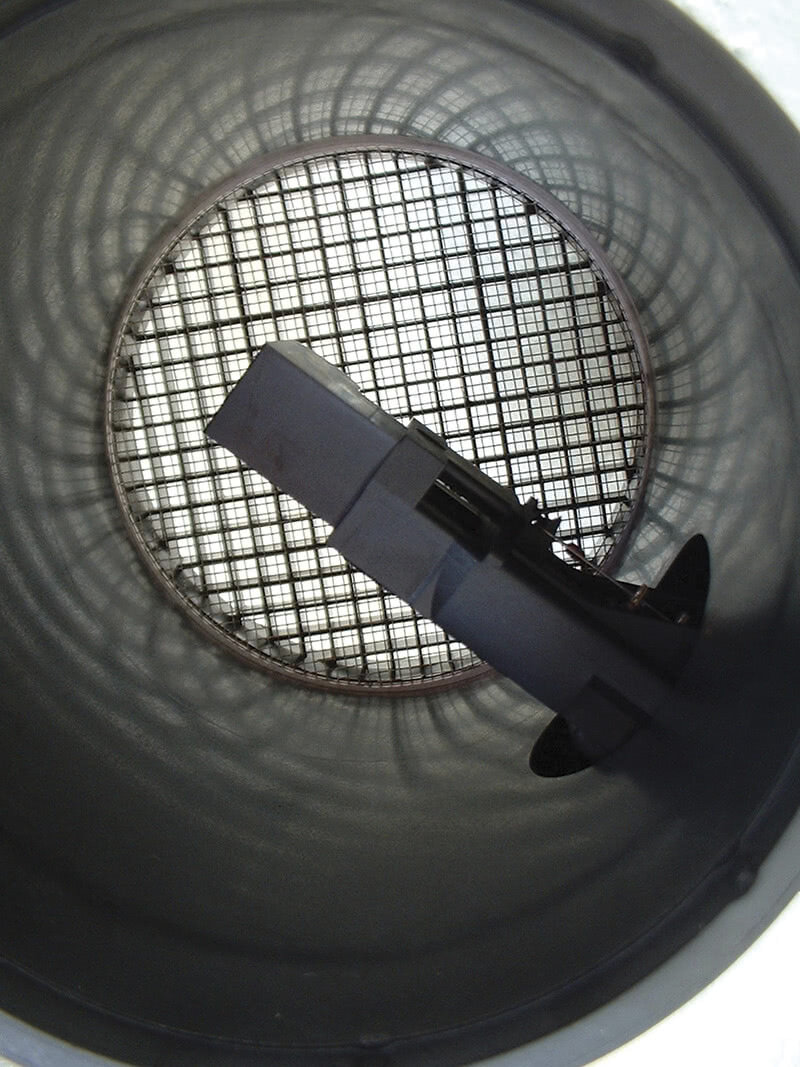
The only potential problem is the placement of the MAF sensor. If you deal with a company that has good engineering, you shouldn’t get a DTC and an illuminated MIL.
“The car sounds different when one of these kits is installed,†said Joe Chuan, national sales manager for Neuspeed. “It sounds a lot throatier, and people get more aggressive with the throttle. Any gains that they may have seen if their driving habits remained the same are negated by the fact that they’re heavier on the throttle because they like hearing the sound and feeling the rush of the extra power they get from the kit.â€
In most cases, there are no legal ramifications to installing a cold-air intake system. Because the intake is upstream of sensors and emissions equipment, the upgrades don’t affect other components, and modern computers can adjust for the changes in air flow that result from specialty intakes.
MIL potential
“Generally, if a cold-air intake system has been assigned a CARB E.O. number, it is legal for sale and use in all 50 states,†Treydte said. “There are some instances that may not require a CARB E.O.  However, some systems may have a negative impact on certain engine sensors and could cause OBD II codes [DTCs, with the accompanying MIL/check-engine lights] to occur.  Techs and shop owners should install systems from reputable engineering companies that design their products to avoid such circumstances.  This will minimize comebacks.â€
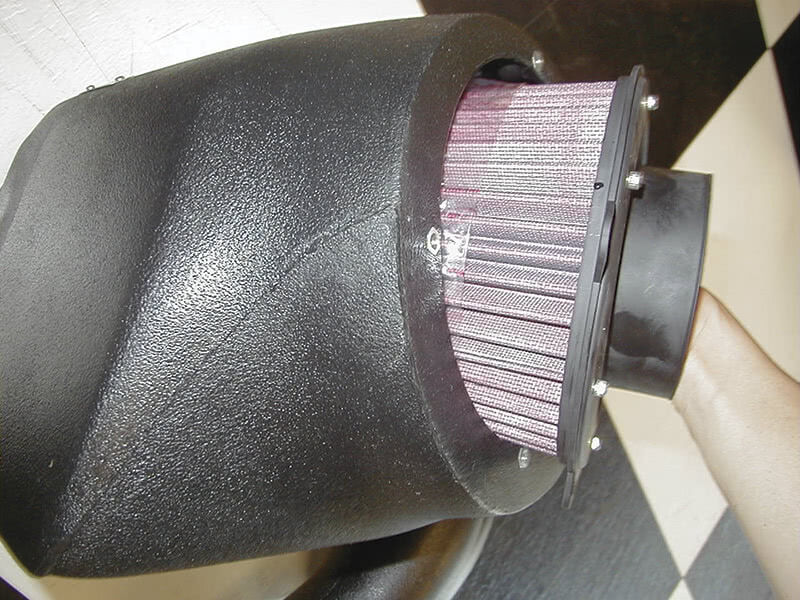
Customers should be made aware that the installation is a simple bolt-on process and usually does not require modifi cations to the vehicle, so the factory intake system can be easily re-installed at any time. Customers are sometimes hesitant to modify a new vehicle due to warranty or resale concerns, so this is important.
Granatelli also pointed out that, while most systems do not pose an issue with emissions compliance, changes in tubing may require further calibration.
“If the tubing is changed between the MAF and the throttle body, then testing is required,†he said. “The mass air-flow sensor is critical to telling the ECM [electronic control module, more accurately the powertrain control module, or PCM] the exact amount of air that the engine is ingesting, so the air passing through the sensor in turn changes the calibration.â€
While all types of vehicles and engines can benefit from cold-air intake upgrades, some see better results than others. David Vespremi, brand marketing director for K&N, said that his company doesn’t release an intake systems unless it can guarantee a horsepower gain.
“Obviously, bigger displacement, bigger horsepower engines see the numerically largest power gains,†he said. “For example, a Ford Mustang SVT owner can expect to see as much as a 30 rear-wheel horsepower gain with just a K&N air intake system. However, the percentage of gains seen on most vehicles is generally fairly even across the board, so scaled for engine size and output, the gains are fairly consistent on most makes and models.â€
Combo up-sell
Another benefit to offering intake upgrades to service and repair customers is the opportunity for up-selling to other performance enhancements. Depending upon how far the shop wishes to expand into other areas, a host of possibilities exist. Aaron Morant, vice president of sales and marketing for the Outlaw Power division of Envisia Technologies, said that the list is practically endless, but there are two other components that are natural adjuncts.
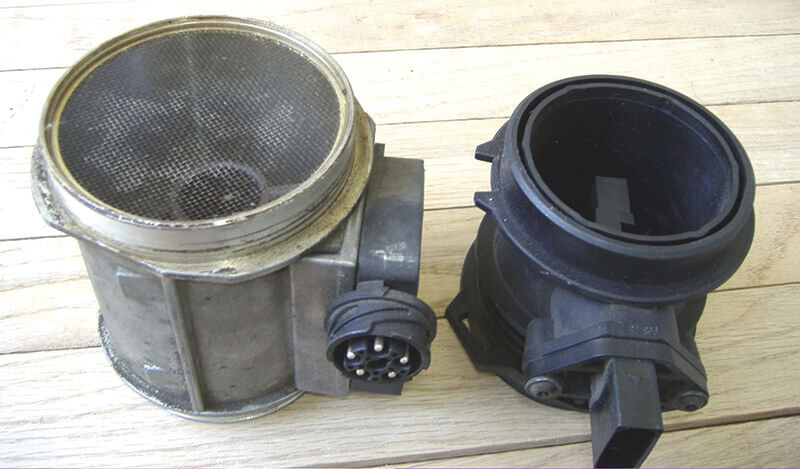
As one expert says, “If you increase your air intake to 100mm throughout but stick with the stock 70mm MAF, then you really have a 70mm air intake.â€
“If a customer enters a retailer intending to purchase a cold-air intake system, the retailer can easily up-sell an exhaust and a computer programmer upgrade,†he explained. “While they are not required for the cold-air intake system, the trio of parts allows the retailer an opportunity to increase the performance of the vehicle while simultaneously increasing sales. The cold-air intake system can also be used as an up-selling tool because it is relatively less expensive when compared to an exhaust or computer programmer. A customer intending to purchase an exhaust or programmer can easily be upgraded with a intake system for a small additional investment and a nice performance enhancement.â€
Each shop’s customer base varies to some degree, so inventory may vary depending upon the type of customer encountered on a regular basis. Still, carrying components that apply to the greatest percentage of vehicle types served can be a wise policy.
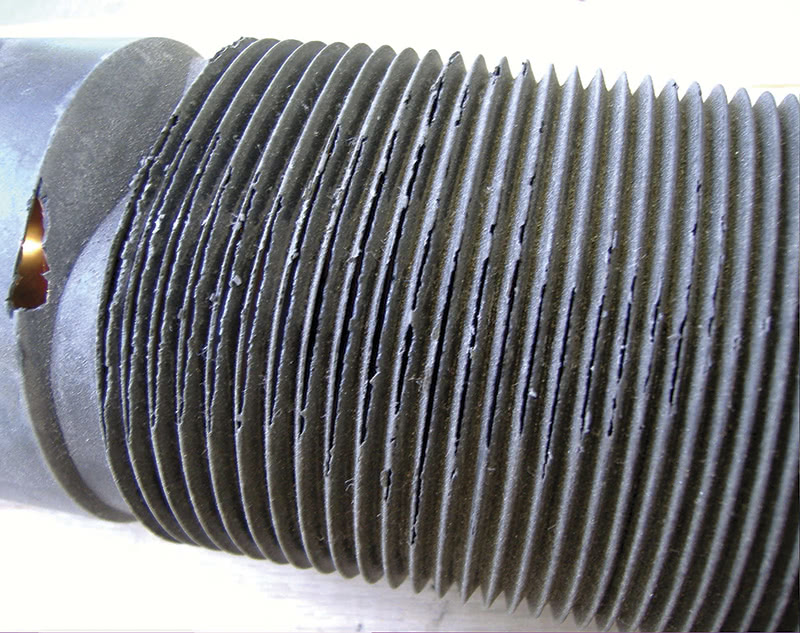
If you should have a DTC develop at some point after the installation, check the downstream duct before you start complaining to the intake air system manufacturer. You might just have “false air,†as was coming through this deteriorated plastic part. Not uncommon.
“The difference between having a system immediately available versus forcing the customer to return can be the difference between a sale and lost revenue,†Morant said. “Customers don’tlike to wait for something that they want, and forcing a customer to wait may give him time and motivation to shop the competition.â€
In addition, Morant pointed out that many distributors and manufacturers may have flexible inventory programs that can assist the shop owners in maintaining and servicing inventory levels with period adjustments or inventory swaps. “It is highly recommended that shops coordinate with their sales representatives on behalf of the distributors and manufacturers and ask them for special inventory programs that are available to retailers who will stock the product,†he advised.
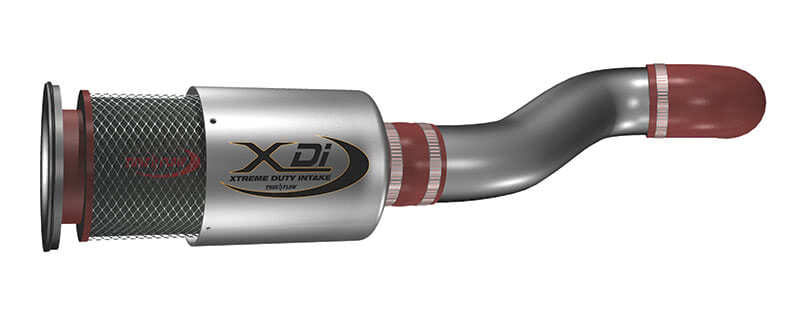
Intake systems that enclose the air filter protect it from airborne particles, moisture and heat, which might be worse for performance than the more restrictive OE system. An enclosed air filter with well-designed ducting to provide optimal air fl ow provides a cooler, denser charge for better performance.
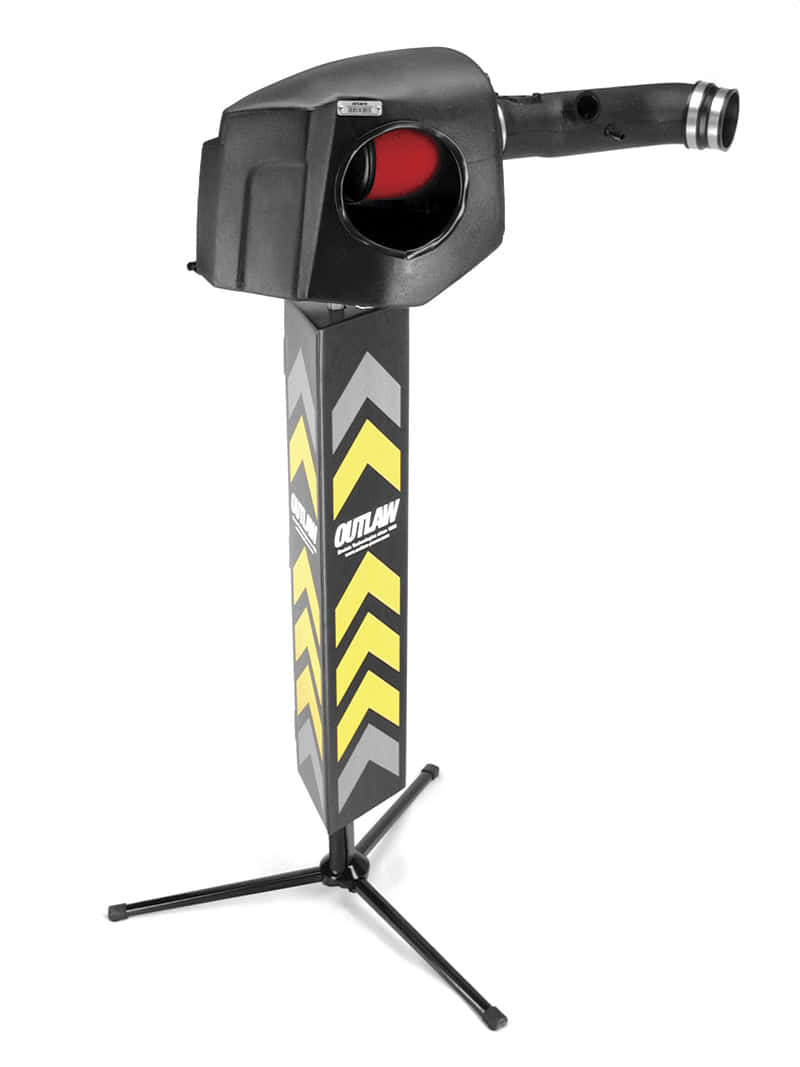
Point-of-purchase displays may be the most effective tool a salesperson can utilize to market cold-air intake systems. Outlaw Power provides displays that include a complete system, giving customers the opportunity to see actual components and allowing the salesperson to point out and explain key features that can help customers understand the reasons why they might benefit from the purchase of a cold-air intake system.
It’s also a good idea to take advantage of a supplier’s point-of-purchase displays, brochures or other sales materials. POP displays can help the customer understand the benefits of cold-air intake systems as well as explain how the benefits are obtained.
All of our sources were adamant that shop owners and technicians should fully understand their suppliers’ products and procedures before offering any cold-air intake system.
“Do your homework,†Mollica counseled. “Ask the companies what the rate of return is on their products, what the filtration efficiency of their filters are, if any of their intakes throw check engine lights, what their warranty policy is, whether or not their intakes include complete installation hardware, what their return policy is, what their manufacturing processes and materials are, what their engineering procedures are. I also suggest visiting local races and car shows and getting feedback from enthusiasts who are knowledgeable and have experience with the products. Finally, don’t be afraid to contact the manufacturer directly if you are having an issue with something or have questions that your distributor cannot answer. Often, a retailer will contact the distributor with an installation question and it could take days to get an answer when a phone call to the manufacturer could net an answer in a few hours or less.â€
And investing a little research into this lucrative product line could net your shop a simple and profitable revenue stream.

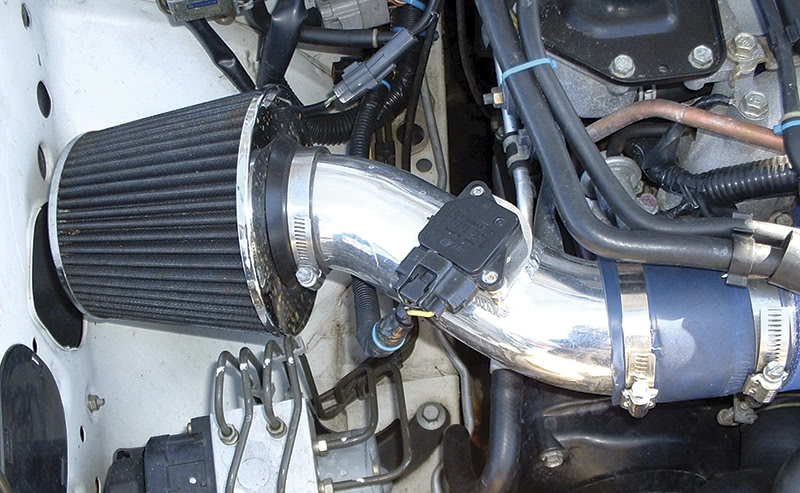
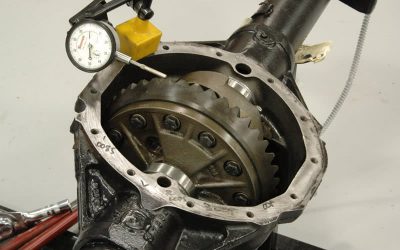
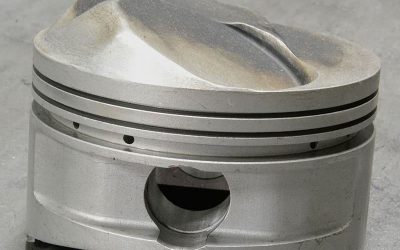
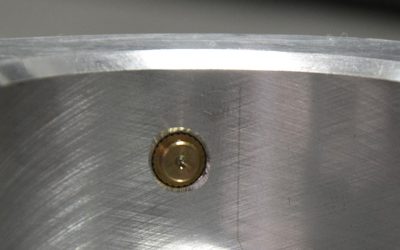
0 Comments